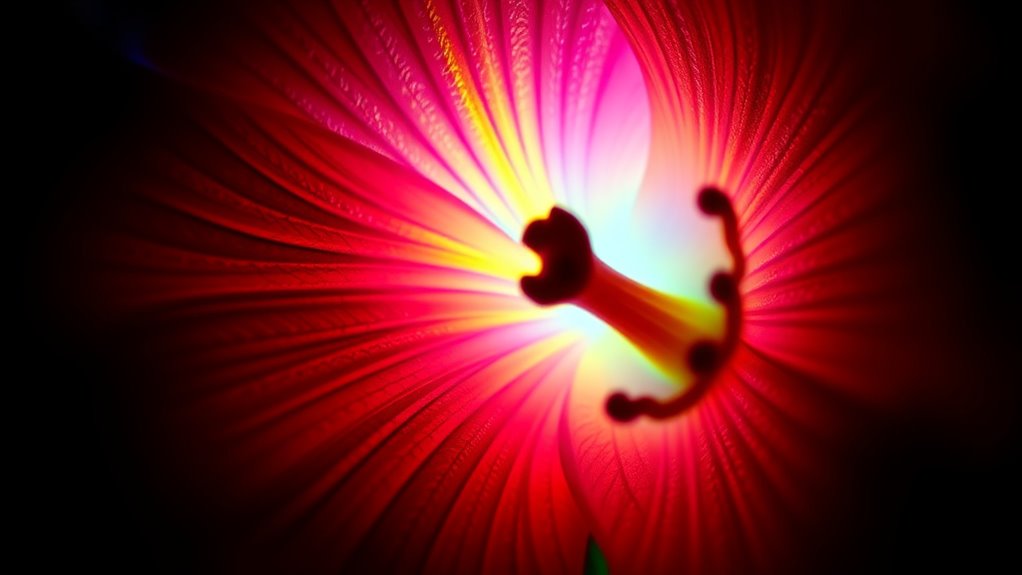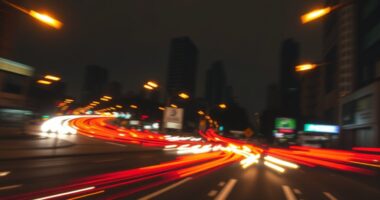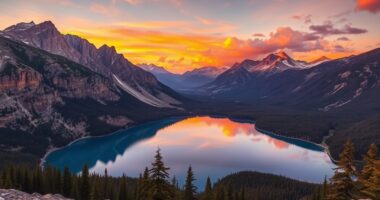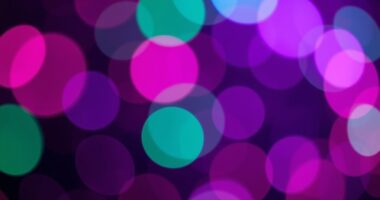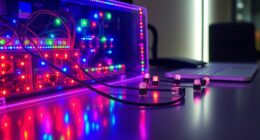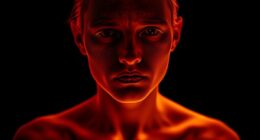By combining focus stacking with ultraviolet photography, you can capture stunning images that reveal impossible-to-see details like flower markings, insect signals, and other natural features invisible to the naked eye. Using specialized UV equipment and precise focus adjustments, you extend the depth of field and guarantee every detail stays sharp. Properly aligning and processing your images lets you produce vibrant, detailed views of hidden worlds. Keep exploring to discover how these techniques uncover secrets of the natural environment.
Key Takeaways
- Focus stacking combines multiple UV images at different focus points to achieve sharpness throughout the scene.
- UV photography reveals hidden details like flower patterns and animal signals invisible to the naked eye.
- Precise focus adjustments and stable lighting are essential for seamless UV focus stacking.
- Image alignment and calibration ensure accurate stacking and maintain UV detail integrity.
- Enhanced UV images uncover natural phenomena and features that expand our understanding of invisible worlds.
Understanding Focus Stacking and Its Benefits
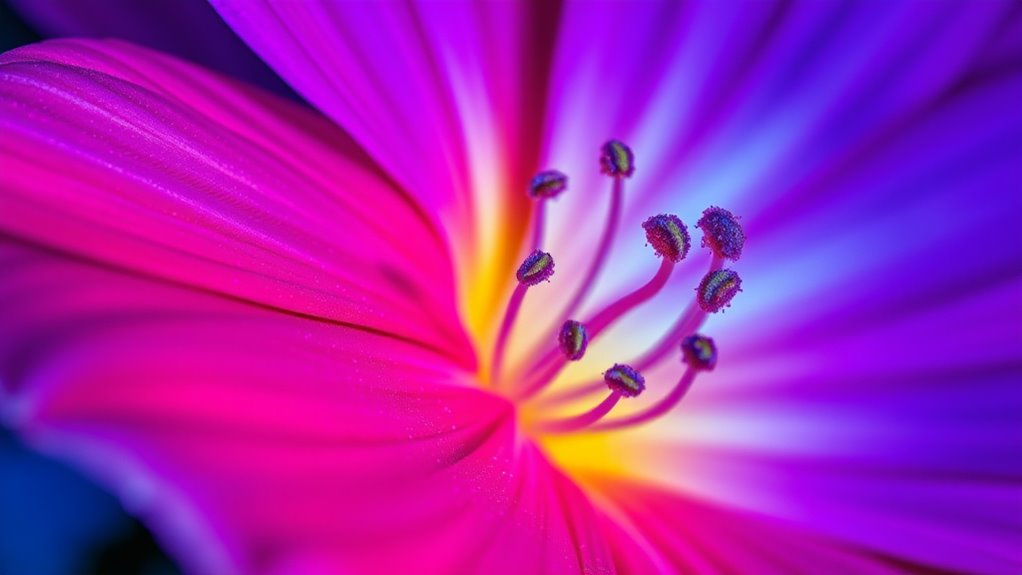
Since a single ultraviolet photograph often can’t capture the entire depth of a subject with sharp focus, focus stacking offers a powerful solution. It allows you to combine multiple images taken at different focus distances through image fusion, creating a final photo with an extended depth of field. This technique guarantees that every detail from foreground to background remains crisp and clear, which is especially important in ultraviolet photography where capturing fine textures and subtle features matters. By stacking these images, you eliminate the compromises of limited focus in individual shots. The benefit is a more complete, detailed view of your subject, revealing invisible details that would be lost with a single exposure. Focus stacking therefore enhances your ability to produce sharp, vibrant ultraviolet images with clarity throughout the entire scene. Additionally, mastering market research can help you identify trending themes or techniques in ultraviolet photography that resonate with enthusiasts and collectors alike.
The Basics of Ultraviolet Photography
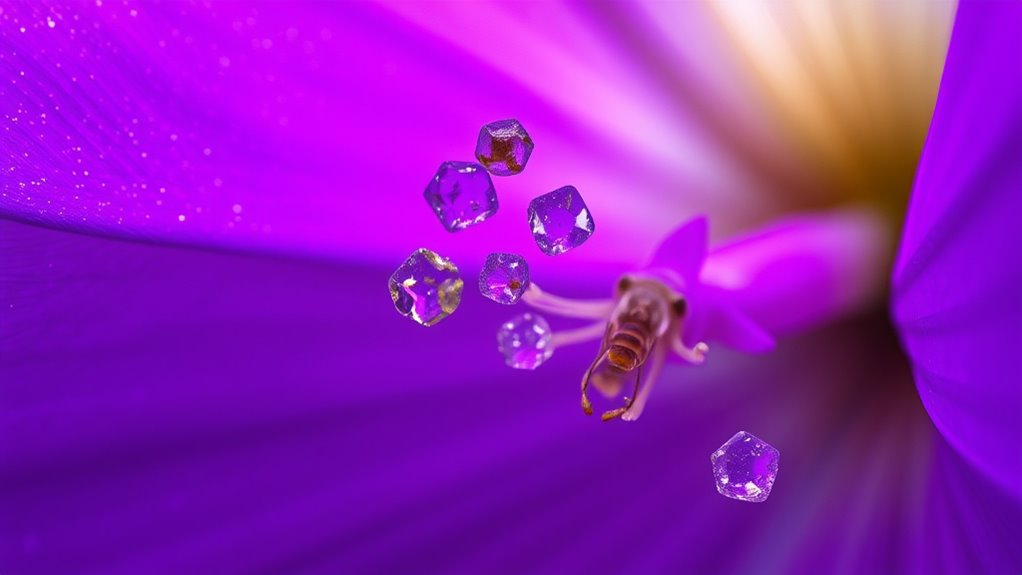
Ultraviolet (UV) photography involves capturing images using ultraviolet light, which lies beyond the visible spectrum for human eyes. To do this effectively, you need reliable UV light sources, such as specialized lamps or LEDs, that emit consistent and strong UV radiation. These sources illuminate your subject, revealing details invisible in normal light. Sensor sensitivity plays a pivotal role; most standard cameras have limited sensitivity to UV light, so you might need modified sensors or specialized UV cameras to maximize image quality. Since UV light behaves differently from visible light, understanding how your camera’s sensor responds helps you adjust exposure and focus properly. Additionally, choosing the right UV filters can help block unwanted wavelengths and improve image clarity. Mastering these basics allows you to explore new microscopic worlds and uncover hidden details that are otherwise invisible to the naked eye.
Equipment and Techniques for Combining Focus Stacking With UV Imaging
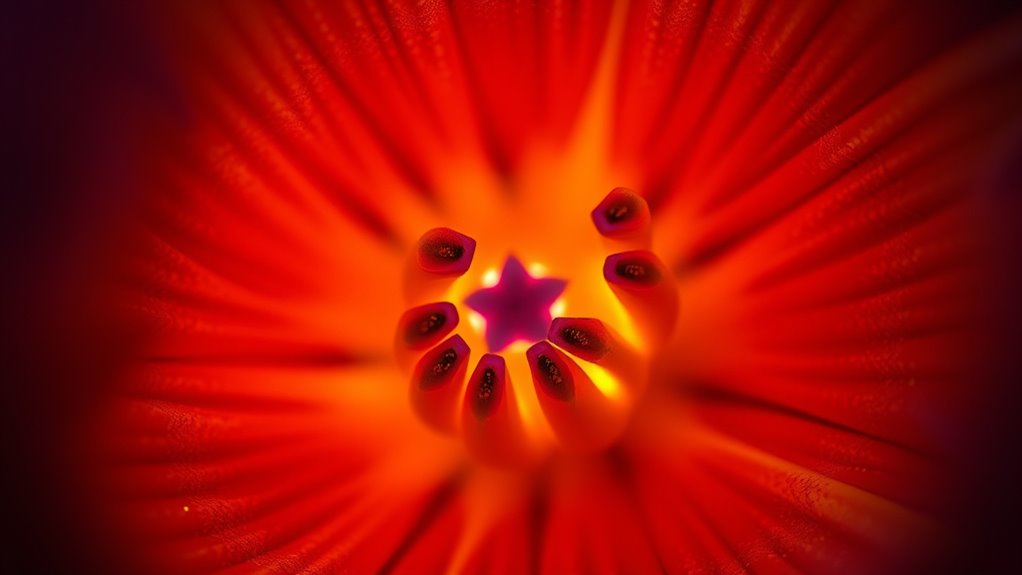
Combining focus stacking with UV imaging requires specialized equipment and careful technique to achieve sharp, detailed images. You must start with a camera calibrated for UV photography, ensuring accurate color and focus. Precise camera calibration is essential to maintain consistency across multiple shots. Lighting control is equally critical; UV light sources need to be stable and evenly distributed to prevent shadows and glare. Use diffusers or filters to manage light intensity and minimize reflections. A sturdy tripod and focus rail help you capture a series of images at different focus points without shifting the composition. By maintaining consistent lighting and calibration, you ensure seamless stacking results that reveal hidden UV details with clarity and precision. Additionally, understanding the contrast ratio of your setup can help optimize the visibility of fine UV features.
Capturing and Processing Images to Reveal Hidden Details
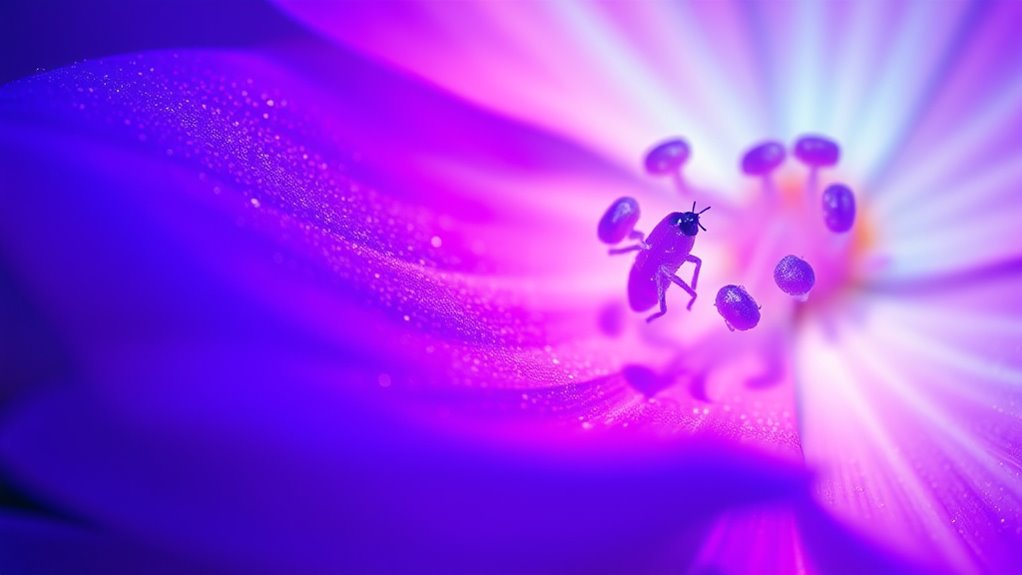
Capturing and processing images to disclose hidden UV details requires careful technique and attention to detail. You need to optimize your depth of field to guarantee all relevant features are sharp across different focal planes, which is essential for effective focus stacking. Proper image calibration is vital; this involves correcting for camera sensor inconsistencies and ensuring uniformity in UV response. Use consistent lighting and camera settings for each shot to maintain uniformity in your image stack. When processing, align the images precisely before stacking to avoid artifacts. Adjust contrast and contrast masks to highlight UV-visible details, making subtle features stand out. This meticulous approach ensures you capture the full spectrum of hidden details, unveiling the invisible worlds that UV photography can reveal. Additionally, understanding the importance of consistent calibration is crucial for achieving accurate and reliable results in UV imaging.
Exploring the Natural World Through Invisible Spectrums
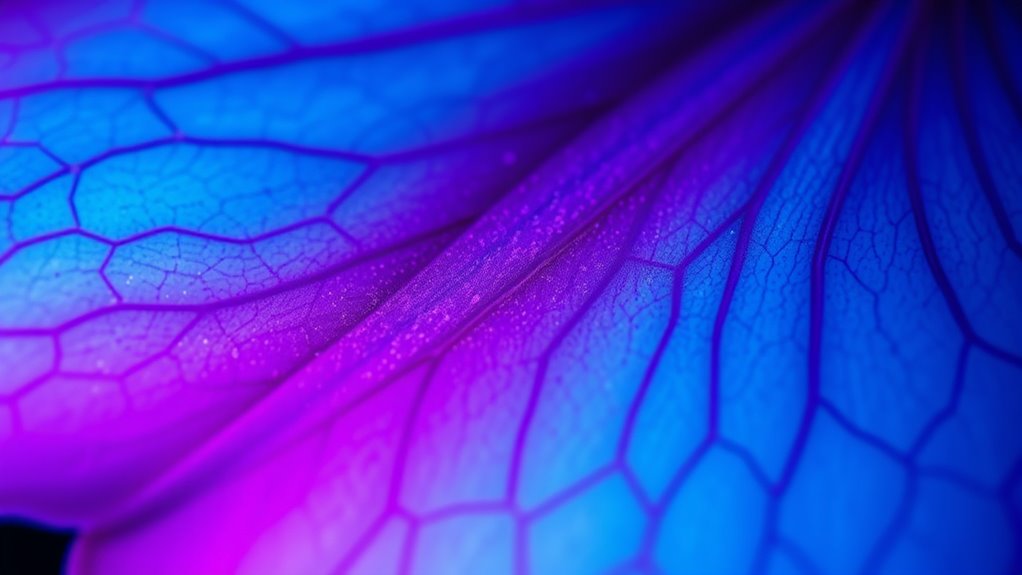
Have you ever wondered what secrets lie beyond the range of human vision in the natural world? Invisible spectrums like ultraviolet reveal details your eyes can’t perceive, expanding your understanding of nature. Light diffraction causes certain wavelengths to bend differently, allowing ultraviolet and infrared light to highlight hidden features. For example, flowers often reflect UV patterns that guide pollinators, while insects see a broader color perception spectrum. This deeper insight helps scientists study behaviors and interactions unseen to us. Use focus stacking with ultraviolet photography to capture these details clearly. Here’s a quick look at how different spectrums reveal nature’s secrets: generative AI can assist in processing and analyzing complex visual data for more detailed insights.
| Spectrum Type | Key Features |
|---|---|
| Ultraviolet | Reveals flower markings and animal signals |
| Visible Light | What humans see |
| Infrared | Detects temperature and plant health |
| Light Diffraction | Explains how different wavelengths bend |
Frequently Asked Questions
How Does Focus Stacking Impact Image Processing Time?
You’ll find that focus stacking increases your image processing time because it combines multiple shots to extend the depth of field. This process requires you to align and blend images, which can be time-consuming. However, it improves processing efficiency by producing sharper, more detailed results. While it demands more initial effort, the final image’s clarity makes it worthwhile, especially when revealing intricate details in ultraviolet photography.
What Are Common Challenges in UV Focus Stacking?
When you attempt UV focus stacking, common challenges include managing chromatic aberration and extending depth of field. UV images often show more aberrations due to lens limitations, making it tricky to align images perfectly. You also need to guarantee consistent focus points across shots, which can be difficult given the shallow depth of field in ultraviolet photography. Addressing these issues requires precise calibration and sometimes specialized equipment to achieve sharp, seamless results.
Can This Technique Be Used for Macro or Landscape Photography?
You can definitely use ultraviolet focus stacking for macro photography, where controlling the depth of field is essential for sharp details and subject isolation. While less common for landscapes, it can be effective in capturing intricate textures or revealing hidden details in distant scenes. This technique helps you extend the depth of field and isolate subjects, making both macro and some landscape shots more compelling by revealing invisible ultraviolet details.
How Do Lighting Conditions Affect UV Focus Stacking Results?
Did you know that UV light variability can cause up to 30% differences in focus stacking results? When shooting UV images, lighting conditions substantially impact spectral consistency, which is vital for sharp, detailed stacks. Bright, even lighting enhances UV focus stacking by minimizing shadows and spectral shifts. Conversely, inconsistent UV light can introduce blur or color shifts, making it harder to align images precisely. To guarantee ideal results, control your lighting environment carefully.
What Software Is Best for Combining UV Focus-Stacked Images?
You should consider software options like Helicon Focus, Zerene Stacker, or Adobe Photoshop for combining UV focus-stacked images. These tools excel at image blending, helping you create sharp, detailed results. Helicon Focus and Zerene Stacker are specialized for focus stacking, offering advanced algorithms for seamless blending. Photoshop provides versatile editing capabilities, making it a great choice if you want more control over the final composite.
Conclusion
By mastering focus stacking with ultraviolet photography, you unveil a hidden world as if you’re opening a secret door to unseen beauty. It’s like putting on special glasses that reveal what’s normally invisible to the naked eye. With patience and practice, you’ll discover details others miss, turning everyday subjects into extraordinary discoveries. Keep experimenting, and you’ll find that the invisible becomes vividly clear—an exciting journey into nature’s secret domains waiting to be explored.
